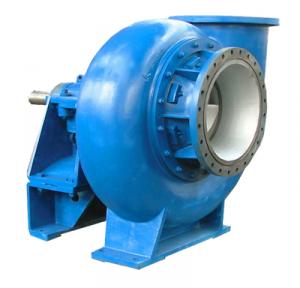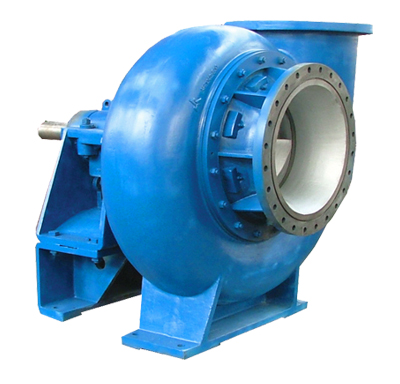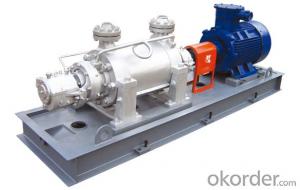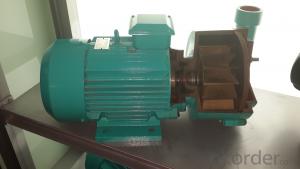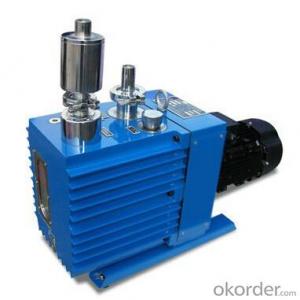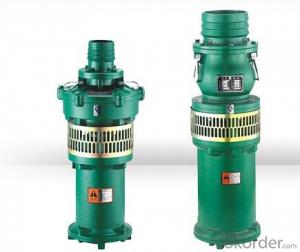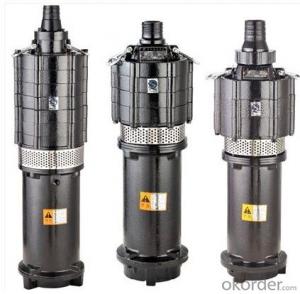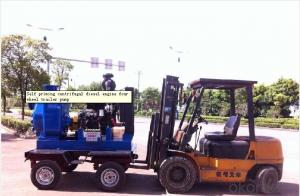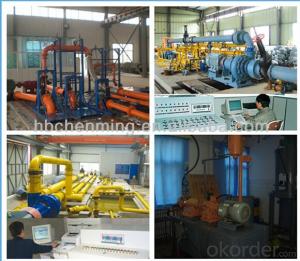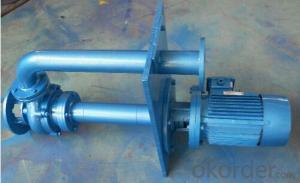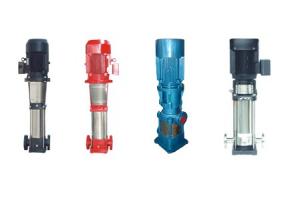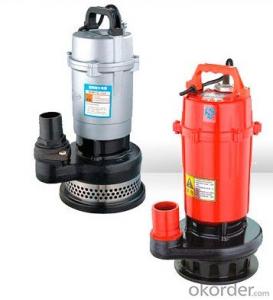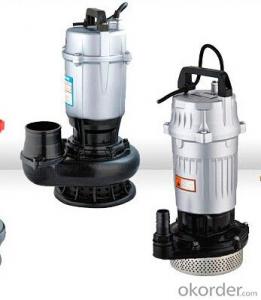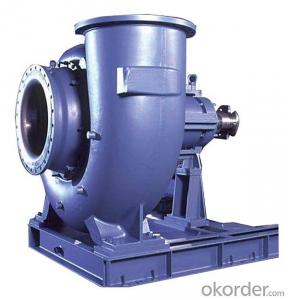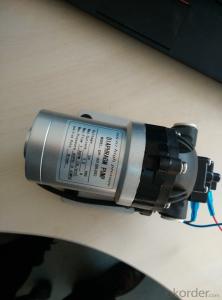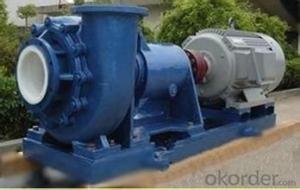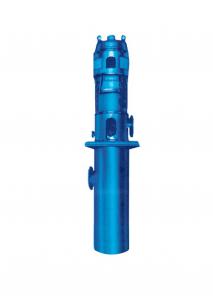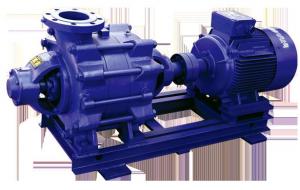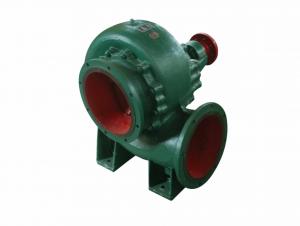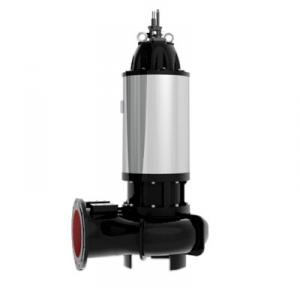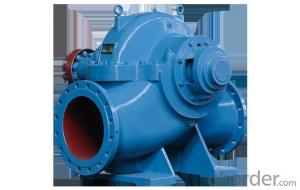Flue Gas Desulphurization Pumps
- Loading Port:
- China Main Port
- Payment Terms:
- TT OR LC
- Min Order Qty:
- -
- Supply Capability:
- 5000 unit/month
OKorder Service Pledge
OKorder Financial Service
You Might Also Like
Description
ASP1040 series flue gas desulphurization pumps are single stage single suction centrifugal pumps,which are applied for wet flue gas desulphurization equipment(FGD)in power plant,transmitting corrosive slurry for absorption tower circulation pump.They are characterized by large capacity,high efficiency,wear-resistance,compact structure,reliable running and low vibration,etc.The technical indexes reach the same kind product level home and aboard .The most important advantages are their excellent performances and easy maintenance.
Application Area
The products have been applied in limestone plaster wet desulphurization equipments.
Performance Range
Discharge diameter:DN=50~900 mm
Capacity:Q=45~18500 m3/h
Head:H=16~105 m
Structural Characteristics
Flue gas desulphurization pump is single stage single suction centrifugal pump,which applies support structure.The material option has fully metal or natural rubber plus metal to meet different users’ requirements.
The pump has a better efficiency by using advanced hydraulic model and computational fluid dynamic software(CFD) to improve it.
End face seal is applied for impeller.Impellers can be optimally positioned by adjusting bearing assembly,which can enhance pump reliability and ensure that pump is highly efficient in operation.
Wet parts adopt different materials combination based on different work conditions to make pump manufacture and usage the most economic and reliable.
Pump can be disassembled form front and back,unnecessary to disassemble inlet and outlet pipelines,which is convenient for maintenance.
Thin oil lubrication is used on the bearings,which can improve the lubricating and cooling condition and also extend service life of bearings.
Seal can be selected according to different users and work conditions.There is assembly mechanical seal,packing seal,and auxiliary impeller with packing seal.In order to run reliably,wear-resistant corrosion-resistant metal rings are applied for seal rings in the case of assembly mechanical seal ,which can enhance seal ring capacities of anti-impact and heat dissipation and also can be washed down from inside or outside.
Platinum resistance is fitted on bearing for testing bearing temperature to avoid damage of bearing.
- Q: What is the difference between swashplate pump and crankshaft pump?
- In hydraulic system:Axial piston pump is the use of parallel with the transmission shaft in the plunger plunger reciprocating movement of the volume changes generated by the work. As the plunger and the plunger hole are circular parts, processing can achieve high accuracy with the high volume efficiency, stable operation, good flow uniformity, low noise, high working pressure, but the hydraulic oil pollution is more sensitive, more complicated structure, high cost.
- Q: What are the uses and precautions of magnetic pumps?
- 5, after the motor starts, slowly open the drain valve, until the pump into the normal working state, and then discharge valve to the desired opening;6, before the pump stops working, should first close the exhaust valve, and then turn off the suction valve.
- Q: What is the dry running protector of screw pump? What's the principle and function? Thank you
- When the temperature reaches a certain value, the signal is transmitted to the electric control box through a dry running protector, and the electric control box is used to stop the screw pump so as to protect the screw pump.
- Q: What are the ways of hydraulic pumps?
- There are several ways:Direct flow mode, such as external gear pump;Port plate, such as vane pump, axial piston pump, etc.;
- Q: What's the pump? Where can I use it?
- Working principleIt transfers mechanical energy or other external energy of the prime mover to the liquid, increasing the energy of the liquid. Before the pump starts, the pump shell is filled with the liquid to be transported; after starting, the impeller is driven by the shaft to rotate at high speed, and the liquid between the blades must also rotate. Under the influence of centrifugal force, the liquid is thrown from the center of the impeller to the outer edge and obtains energy, and leaves the outer edge of the impeller at high speed to enter the volute pump shell. In the spiral case, the liquid slows down due to the gradual enlargement of the flow passage, and the part of kinetic energy is converted to static pressure, and finally flows into the exhaust pipe at higher pressure and is sent to the required place. When the liquid flows from the center of the impeller to the outer edge, a vacuum is formed at the center of the impeller. As the pressure at the upper level of the tank is greater than the pressure at the pump inlet, the liquid is continuously pressed into the impeller. Visible, as long as the impeller continues to rotate, the liquid will continue to be inhaled and discharged.
- Q: What are the basic technical parameters of the pump?
- Two, pump head H head is the unit weight of the liquid pump pumping from the inlet of the pump (pump inlet flange) to the outlet of the pump (pump outlet flange) energy value. Effective energy is a Newtonian liquid through the pump unit is obtained. The N m/N=m, the height of liquid column pumping liquid. Habits referred to as meters. Three, the pump speed is n RPM pump unit time revolutions, represented by the symbol n, the unit is r/min. four, the pump NPSH NPSH NPSH is also called net positive suction head, said main parameters of cavitation performance. Cavitation has been used a h power of five, the power of the pump. And the efficiency of the pump is usually refers to the input power, which is the prime mover on the pump shaft power, it is also known as the shaft power, denoted by P;
- Q: What is a vacuum pump for?
- You are not confused by different names. It is mainly used in folding machines, paper cutting machines and water treatment aeration
- Q: Do you have a suction pump higher than 9 meters?
- Pump rated suction generally 7 meters or so, it is estimated that no one calibration pump suction stroke 9 meters. Calibration suction range of 9 meters is not reliable.
- Q: What does "dual purpose" of water pump mean? Please expert advice
- In order to ensure safe and continuous operation, three pumps usually need two units and run one standby.Precautions for using pumps1, if there is any small water pump failure, remember not to work. If the pump shaft packing end wear should be added in time, if you continue to use the water pump will leak. The direct effect of this is the increased energy consumption of the motor, which will damage the impeller.
- Q: Metering pumps related matters
- 2) change the metering pump diaphragmTrouble is often encountered when the old diaphragm is removed. Provide some additional advice on how to remove the old diaphragm.After in the pump head loose, remove the pump head before the stroke length adjustment to the 10% position. To ensure that the electromagnetic axis has sufficient pressure to maintain its connection firmly, so that you can unscrew the diaphragm.The pull end torque from the Jack out of the screw. Seize the liquid counter clockwise rotation. There is a slight resistance that can unscrew the diaphragm.Chemical 3 measurement may end in fluid crystallization, resulting in a one-way valve ball and seat valve does not work.In the end inhalation metering pump may have a gas leak. Hydraulic end suction side connector may lack O ring or suction valve connection loose.3) flow monitoring and measurement of a high viscosity medium, in the process of liquid delivery received a flow failure signal, how can we solve this problem?Move the hydraulic end by loosening the 4 pump head screws. Rotating stroke length to 10%, and seize the hydraulic end, and then slide out of the screw hole, then the screws do not touch them, but still control the back and diaphragm. Then rotate the component counter clockwise, with a slight resistance, and the diaphragm will loosen from the electromagnetic axis. If the diaphragm is not loose, use some grease on the contact surfaces of the diaphragm and the electromagnetic shaft. After a few minutes, gently tap the diaphragm with a small plastic hammer. Then proceed again in accordance with the above description.
Send your message to us
Flue Gas Desulphurization Pumps
- Loading Port:
- China Main Port
- Payment Terms:
- TT OR LC
- Min Order Qty:
- -
- Supply Capability:
- 5000 unit/month
OKorder Service Pledge
OKorder Financial Service
Similar products
Hot products
Hot Searches
Related keywords
